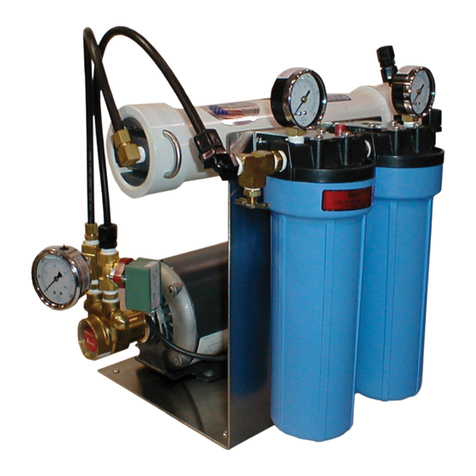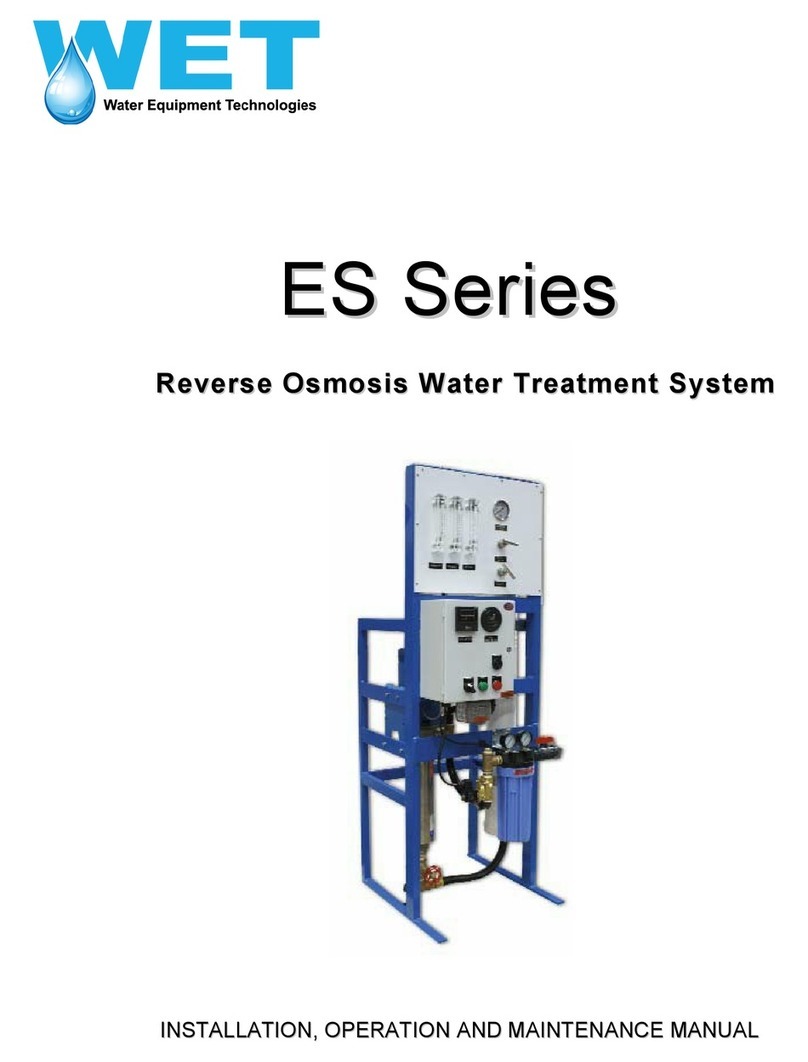
- 7 -
Installation
oTo maximize product water output, a non-pressurized (atmospheric) storage tank should be used
with ALL GRO series RO systems. A plastic (preferably polyethylene) or stainless-steel tank is
recommended with an atmospheric vent and an overflow piped to drain. If a pressurized storage
tank is used, the back pressure will reduce the GRO product output by up to 40%. If a
pressurized storage tank is used, then a 20/40 PSI (1.3/2.6 Bar) pressure switch is necessary to
turn the GRO unit on and off automatically.
A liquid level switch (or pressure switch or float switch, if used) is required to initiate
automatic operation of the GRO system. The switch should have a high and low
activation point with an adequate dead band to prevent the GRO unit from turning OFF and ON
too frequently. A normally closed contact is required so that when the tank fills to the required
level, the OPENING of contacts shuts the GRO unit OFF.
oFor long term performance with minimum maintenance:
Chlorine is removed from the feedwater
Hardness is removed from the feedwater
Iron is removed from the feedwater
If a water softener or automatic carbon filter is used, it should be set to regenerate when the
RO unit is not running, usually at night.
Hookups
1. (Supply) Connect the carbon filter to the GRO unit at the prefilter using non-corrosive hose or
pipe. If no chlorine is present in the feed water system and a carbon filter is not being used, tap
into the main feed water line with a tee or other suitable fitting for connection to the GRO feed
water line.
2. (Reject) Attach the supplied tubing to drain and connect the other end to the reject fitting as
marked. Use an air gap to prevent the possible backflow to the unit.
3. (Product) Attach one end of the supplied tubing to the GRO unit product fitting as marked and
connect the other end to the storage tank.
Do NOT install isolation valves in the Feed or Permeate (Product) lines. Pressures and
temperatures can reach levels where piping and interconnects may fail, causing damage,
personal injury or death. If isolation valves MUST be used, be sure they are lockable and
are secured in the OPEN position during operation of the RO unit.
4. Connect the correct power (voltage) to the GRO unit. All units are provided with a power cord
that will plug into an outlet. GRO units are available in 110-120 VAC and 220-240 VAC.
Current requirements for the units vary with the capacity of the unit and the required pump
power.





























